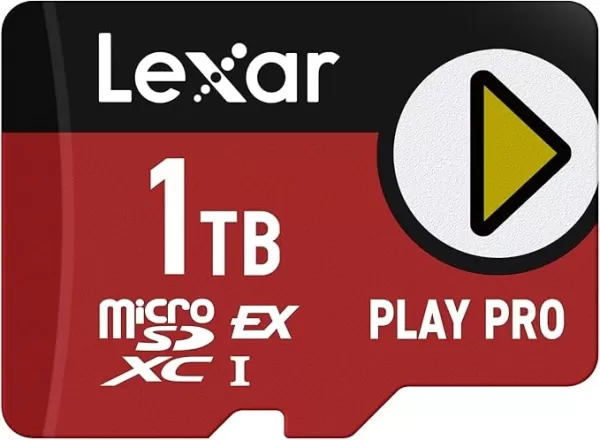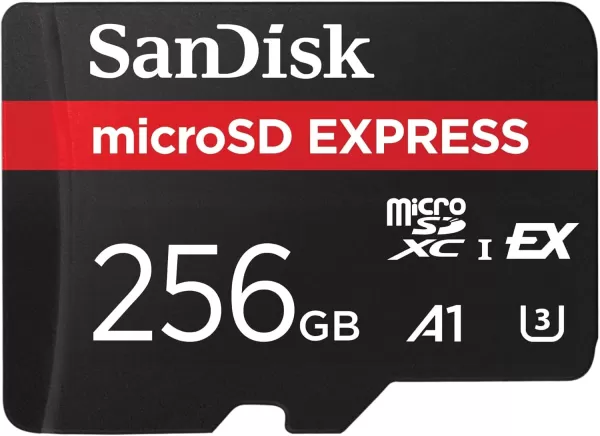Last week, Nintendo unveiled the Nintendo Switch 2, revealing that this new console exclusively supports expansion via MicroSD Express cards. This shift might be inconvenient for those with existing collections of MicroSD cards, but it's a logical move. MicroSD Express cards boast significantly faster read/write speeds, akin to the UFS (Universal Flash Storage) used in the Switch 2's internal storage. This means games on your expansion card can load as quickly as those stored internally, enhancing your gaming experience at the cost of not using less expensive non-Express MicroSD cards.
MicroSD vs. MicroSD Express
The evolution of MicroSD cards has seen six different speed ratings over the years. Starting with a modest 12.5MB/s with the initial SD cards, speeds have progressively increased. From SD High Speed at 25MB/s to the latest SD UHS III, or Ultra High Speed, at 312MB/s, the journey has been remarkable. Five years ago, the SD Association introduced the SD Express standard, which dramatically boosted speeds.
The key innovation with SD Express is its use of a PCIe 3.1 interface, a significant upgrade from the slower UHS-I interface. PCIe is also utilized by high-performance NVMe SSDs, enabling much higher data transfer rates. Full-sized SD Express cards can achieve speeds up to 3,940MB/s, vastly surpassing older SD cards.
While MicroSD Express cards don't reach the peak speeds of their full-sized counterparts, they still offer impressive performance, with speeds up to 985MB/s, which is three times faster than the fastest non-Express MicroSD cards.
Why Does the Switch 2 Require MicroSD Express?
Although Nintendo typically keeps its hardware decision-making process under wraps, the rationale for requiring MicroSD Express cards in the Switch 2 is compelling. The primary reason is speed. A game installed on a MicroSD Express card will load much faster than on a traditional UHS-I MicroSD card, thanks to the PCIe 3.1 interface. This requirement might soon extend to handheld gaming PCs as well.
The internal storage of the Nintendo Switch 2 has been upgraded to UFS from eMMC, making it logical for Nintendo to match the speed of its expansion storage. Early demos suggest significant improvements in load times, from a 35% reduction when fast traveling as reported by Polygon, to a 3x initial load speed increase noted by Digital Foundry. These enhancements may be due to the faster internal storage, but they could also be attributed to a more powerful CPU and GPU, which process data more efficiently. The necessity for external storage to keep pace ensures that future games won't be slowed down by the use of an SD card.
Additionally, this move paves the way for even faster storage solutions in the future. The current fastest standard for SD cards, SD 8.0 Specification, allows full-size SD Express cards to reach speeds up to 3,942MB/s. Although MicroSD Express cards can't match this speed yet, the potential for future advancements is clear, especially if the Nintendo Switch 2 supports these higher speeds.
MicroSD Express Capacity Options
MicroSD Express cards are still gaining traction, and their adoption is expected to accelerate with the Nintendo Switch 2's launch. Currently, options are limited. Lexar, for example, offers a single MicroSD Express card in 256GB, 512GB, and 1TB capacities, with the 1TB variant priced at $199.

Lexar Play Pro MicroSD Express
0See it at Amazon
SanDisk, meanwhile, lists only one MicroSD Express card, topping out at 256GB, which matches the internal storage capacity of the Switch 2. By the time the Switch 2 hits the market, expect to see more MicroSD Express cards, though options over 512GB might be scarce initially. As companies like Samsung ramp up production, the availability of higher capacity cards should improve.

SanDisk MicroSD Express 256GB
0See it at Amazon















